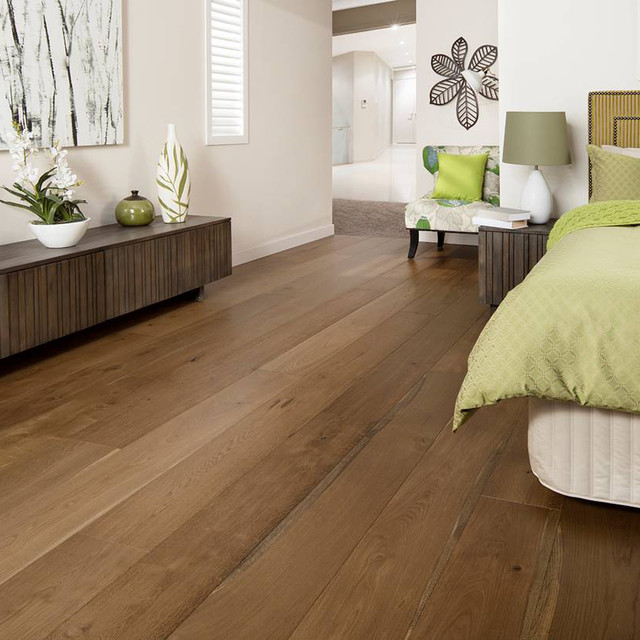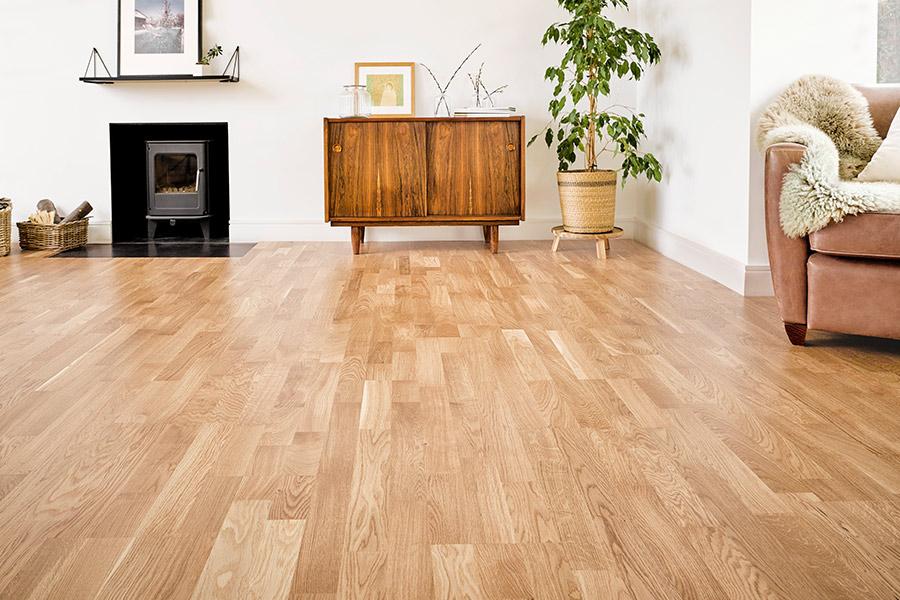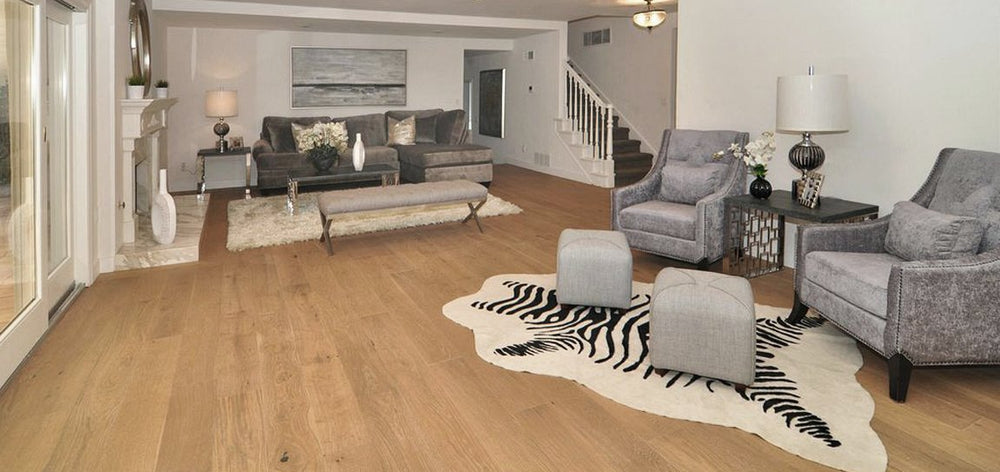Considering a stunning and durable flooring option? Look no further than European oak engineered hardwood flooring. This type of flooring combines the timeless beauty of European oak with the enhanced stability and practicality of engineered construction, making it an ideal choice for a wide range of homes and lifestyles.
The Allure of European Oak: Aesthetics and Beyond

European oak engineered hardwood flooring stands out due to its inherent beauty and the way it seamlessly blends aesthetics with functionality. It’s more than just a floor covering; it’s an investment in the long-term value and visual appeal of your home.
Before we dive into the specifics, let’s appreciate the heart of the matter. European oak, revered for centuries for its strength and distinct grain patterns, brings a sense of nature’s artistry into your living space. Imagine the swirling patterns and subtle color variations underfoot, each plank telling its own story.
Timeless Appeal and Natural Beauty
European oak possesses a timeless elegance that surpasses fleeting trends. Its warm tones, ranging from light honey to rich amber, complement a myriad of interior design styles, from rustic farmhouse to sleek modern aesthetics. The natural grain patterns, unique to each tree, add character and depth, creating a visually stimulating surface that evolves with time.
This isn’t just about looks; it’s about creating an ambiance. The visual texture of wood can have a grounding, calming effect on a room’s atmosphere. The natural light will play across the surface of the oak, highlighting the detail in and creating an inviting ambiance. When you select European oak for your flooring, you’re choosing a product with history, sophistication, and a natural beauty that’s constantly rewarding.
Durability and Longevity: An Investment in the Future
While aesthetics are paramount, the durability of European oak engineered hardwood flooring is what truly sets it apart. Unlike solid hardwood, which is susceptible to warping and cracking in humid environments, engineered flooring is designed for enhanced stability. It consists of multiple layers of wood, with a top layer of genuine European oak bonded to a core of high-density fiberboard or plywood. This cross-layered construction minimizes expansion and contraction, making it suitable for installation in basements and over concrete slabs.
Choosing this over, say, carpet, is an investment in the long term value of the house and a reduction in the need to replace your flooring. It saves you money in the long run, reducing the cost of home renovations.
Furthermore, the inherent hardness of European oak contributes to its scratch and dent resistance. While no flooring is impervious to damage, European oak can withstand the rigors of daily life, maintaining its beauty for years to come with proper care and maintenance. It is about the longevity of the materials and how well the flooring can hold up for years.
Value Addition to Your Home
Installing European oak engineered hardwood flooring isn’t merely a cosmetic upgrade; it’s a value-adding investment. Prospective homebuyers are often drawn to the warmth and sophistication of hardwood floors, recognizing their contribution to the overall aesthetic and perceived quality of a home. Upgrading to European oak signals a commitment to quality and craftsmanship, potentially increasing your property’s resale value.
Think of it as an investment in both the present and the future. You get to enjoy the beauty and durability of the flooring immediately, and you can rest assured that it will be a valuable asset should you ever decide to sell your home. It is not only about the aesthetic value that it brings, but also in terms of its resale value to attract prospective homebuyers.
The Engineered Advantage: Stability and Versatility

While the appeal of European oak is undeniable, the engineered aspect of this flooring option offers distinct advantages over traditional solid hardwood. Engineered construction enhances stability and increases versatility, making it a practical choice for a wider range of applications.
Engineered flooring allows for installation not possible with traditional solid wood. Places like basements and over concrete slabs are now safe and practical options for homeowners. This allows for easier maintenance and increased safety of the building.
Construction and Stability
The key to engineered flooring’s superior stability lies in its layered construction. Typically, a European oak engineered plank consists of a top layer, or veneer, of real European oak, bonded to a core composed of multiple layers of plywood or high-density fiberboard (HDF). These layers are cross-laminated, meaning they are glued together with the grain running in opposite directions. This counteracts the natural tendency of wood to expand and contract with changes in humidity, resulting in a more stable and dimensionally consistent product.
This is particularly important in environments with fluctuating humidity levels, such as basements or coastal regions. Solid hardwood flooring is prone to warping, cupping, and cracking under these conditions, requiring costly repairs or even replacement. European oak engineered flooring, on the other hand, can withstand these environmental challenges without compromising its structural integrity or aesthetic appeal.
Installation Options and Versatility
Engineered hardwood flooring offers a variety of installation options, adding to its versatility. It can be installed using the:
- Glue-down method: where the planks are adhered directly to the subfloor.
- Nail-down method: where the planks are mechanically fastened to a wooden subfloor.
- Float method: where the planks are connected using a tongue-and-groove system and “floated” over a thin underlayment.
The floating method is particularly popular for DIY projects, as it requires no specialized tools or skills. This versatility makes engineered flooring suitable for both professional installations and home renovations.
Furthermore, engineered flooring can be installed over a variety of subfloors, including concrete, plywood, and even existing flooring. This eliminates the need for costly subfloor preparation, saving both time and money.
Suitability for Different Environments
The stability and versatility of European oak engineered flooring make it a suitable choice for a wide range of environments, including:
- Basements: Its resistance to moisture makes it ideal for below-grade installations.
- Kitchens: Its durability can withstand the spills and foot traffic of a busy kitchen.
- Bathrooms: With proper sealing and ventilation, it can add warmth and elegance to a bathroom.
- Living rooms and bedrooms: It will bring warmth, coziness and bring an exquisite feeling to your home.
However, It is important to note that while it can be installed in any environment, it is not waterproof. Standing water should be cleaned up promptly to prevent damage.
Choosing the Right European Oak Engineered Flooring

Selecting the right European oak engineered flooring for your home depends on several factors, including your budget, aesthetic preferences, lifestyle, and the specific requirements of your space. It’s essential to carefully consider each of these factors to ensure that you choose a product that meets your needs and expectations.
It is not about making the most expensive choices, but the smartest choice for your living conditions and what you want the house to be. Buying a house is the biggest decision of your life, make sure that you get the best option.
Species, Grade, and Cut
While all European oak flooring shares the same basic characteristics. There are several subtle variations to consider when choosing your floor:
- Oak Species: While most European oak flooring is made from Quercus robur or Quercus petraea, different subspecies and growing conditions can influence the color and grain of the wood.
- Grade: Flooring is graded based on the presence and size of knots and color variations. Higher grades have fewer imperfections and a more uniform appearance, while lower grades have more character and rustic charm.
- Cut: The cut of the wood, whether plain-sawn, rift-sawn, or quarter-sawn, also affects the grain pattern. Plain-sawn wood has the most pronounced grain, while quarter-sawn wood has a straighter, more uniform grain.
Consider the design and style of your home before taking everything into account.
Finish and Texture
The finish and texture of your flooring play a significant role in its overall appearance and feel. Common finishes include:
- Polyurethane: This is a durable, protective finish that is resistant to scratches and stains.
- Oil: This penetrates the wood, providing a natural look and feel.
- UV-cured acrylic: This is a durable, low-maintenance finish that is resistant to fading.
The texture of the flooring can range from smooth to hand-scraped or wire-brushed, adding character and visual interest. The different textures create an effect that feels more natural. The feeling connects more with nature and gives the house a sense of life.
Thickness and Wear Layer
The thickness of the European oak veneer, or wear layer, is a critical factor in determining the durability and longevity of your flooring. A thicker wear layer allows for more refinishing over the life of the floor. More refinishing offers more options for you, and keeps the floors looking fresh.
Here is a table for wear layer and traffic level:
| Wear Layer Thickness (mm) | Recommended Traffic Level |
|---|---|
| 2-3 | Light Residential |
| 3-4 | Moderate Residential |
| 4-6 | Heavy Residential / Light Commercial |
Consider the amount of foot traffic in your home and the potential for wear and tear when selecting this.
Maintenance and Care for Longevity

Proper maintenance and care are essential to preserving the beauty and prolonging the life of your European oak engineered hardwood flooring. With a few simple precautions and regular cleaning practices, you can keep your floors looking their best for years to come.
Making smart choices is all it takes, ensuring that all the measures taken are worth it and that it makes a positive change to your life. Maintaining is a continuous activity, and must be done at all times.
Regular Cleaning Practices
- Sweeping or vacuuming: This will remove loose dirt and debris.
- Damp-mopping: This is necessary for removing stubborn stains and grime.
- Use cleaner This will dissolve and clean up stains without destroying the structural integrity of the floors.
- Dry floors immediately Wiping up spills and wetness as soon as possible will stop potential water damage.
Always use cleaning products specifically designed for hardwood floors and test them in an inconspicuous area first to avoid damaging your finish. Avoid using harsh chemicals, abrasive cleaners, or excessive water, as these can dull the finish and damage the wood.
Preventive Measures
- Use rugs and mats in high-traffic areas. Place mats and rugs to collect any dirt that may be present.
- Protect Furniture Feet: Use furniture pads to protect the flooring from scratches.
- Control Humidity Levels: Too much humidity can cause the wood to expand causing damage, while too little humidity can cause it to contract and crack.
Refinishing
Eventually, your European oak engineered hardwood flooring may require refinishing to restore its original luster and remove scratches or imperfections. How often it will be needed depends on the thickness of the wear layer and the amount of traffic in your home. With a thicker wear layer, the flooring can be refinished multiple times, extending its lifespan and keeping it looking beautiful for years to come
FAQs About European Oak Engineered Flooring

Here are some frequently asked questions about European oak engineered hardwood flooring:
Is European oak engineered flooring suitable for homes with pets?
Answer: Yes, European oak engineered flooring is a durable and pet-friendly option. Its scratch-resistant surface can withstand the claws and activity of pets, and it is easier to clean up pet messes compared to carpets. However, it’s important to trim your pet’s nails regularly and use rugs in high-traffic areas to minimize wear and tear.
How does European oak engineered flooring compare to solid hardwood flooring?
Answer: While both options offer the beauty of real wood, engineered flooring offers superior stability and is less susceptible to moisture damage. Solid hardwood flooring is more prone to warping, cupping, and cracking in humid environments, while engineered flooring is designed to withstand these conditions. However, solid hardwood can be refinished multiple times, potentially extending its lifespan.
Can I install European oak engineered flooring myself?
Answer: Yes, many engineered flooring products are designed for DIY installation using the floating method. However, it’s essential to carefully follow the manufacturer’s instructions and ensure that the subfloor is properly prepared. If you’re not comfortable with DIY projects, it’s always best to hire a professional installer. It is better to have it done by a professional since it will be done correctly.
Does European oak engineered flooring require special cleaning products?
Answer: Yes, it’s important to use cleaning products specifically designed for hardwood floors to avoid damaging the finish. Avoid using harsh chemicals, abrasive cleaners, or excessive water, as these can dull the finish and damage the wood. It is important to maintain the floors or it will lose its luster as time passes.
How much does European oak engineered flooring cost?
Answer: The cost of European oak engineered flooring varies depending on factors such as the species, grade, thickness, finish, and brand. As of now pricing may vary between \$5 to \$15 per square foot.
Video
Conclusion
European oak engineered hardwood flooring offers a harmonious blend of natural beauty, durability, and versatility. Its timeless appeal, combined with the enhanced stability of engineered construction, makes it an ideal choice for homeowners seeking a stylish and long-lasting flooring solution. By understanding the different options available, considering your specific needs, and following proper maintenance practices, you can enjoy the elegance and warmth of European oak in your home for years to come.
Read also : Unveiling the Beauty of Red Oak Engineered Hardwood – Style, Durability, and Value
